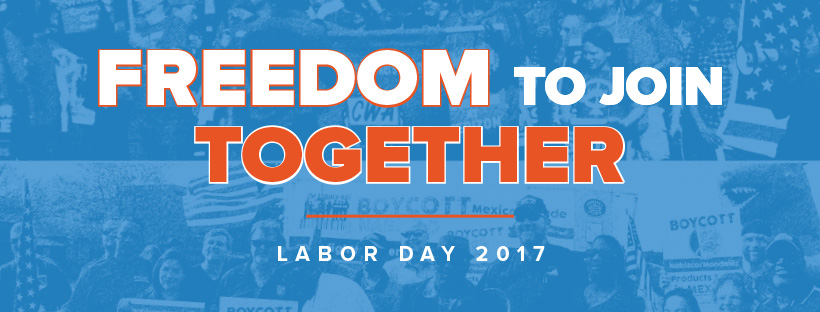135 years ago, Wendel’s Elm Park was the largest park in New York City, and the scene of the of the first Labor Day on Tuesday, September 5, 1882. This date was chosen to bridge the long gap between the 4th of July and Thanksgiving. It was a celebration of working people joining together and a show of strength and spirit of the labor organizations fighting for better wages, benefits and protections for workers.
An estimated 10,000 to 20,000 workers marched from New Your City Hall to Union Square and then to Reservoir Park where the parade ended at noon. Some went back to work, but many stayed for a massive post parade picnic at nearby Wendel’s Elm Park. The festivities were accompanied by protests for the eight-hour work day and against child labor, speeches from labor and community leaders, music, and kegs of beer staged all over the place. In the evening there were fireworks and dancing.
The events were organized by the Central Labor Union (CLU), but there is a dispute over who first came up with the idea. The prevailing thought is that it was CLU Secretary Matthew Maguire. Some think it was Peter McGuire of the American Federation of Labor. Note the similar names. It’s said that Peter McGuire had been invited to Canada to attend their Annual Labor Festival and brought the idea back to New York. Canada’s Annual Labor Festival had begun 10 years earlier in 1872, as a march to the Prime Minister’s home by thousands of Ottawa workers protesting a law that made unions illegal. That year Canada rescinded the law.
In 1884 the Central Labor Union moved the date for Labor Day to the first Monday in September, and encouraged other cities to follow. At the time, workers had to choose to work on Labor Day or lose a day’s pay to attend the festivities. Many states started to make Labor Day a legal holiday and eventually thirty states followed suit.
In May of 1894 there was a nationwide railroad strike that began over a reduction in wages at the Pullman Company. The Pullman Strike paralyzed most of the nation’s rail travel to the west, and delayed or halted the US Mail. President Grover Cleveland sent in US Marshalls and Army troops to break up the strike and violence erupted resulting in many deaths and injuries to the strikers. There was national resentment to the treatment of the strikers. To appease the workers, in June of 1894 Grover Cleveland signed a bill to make Labor Day a National Holiday, but he still lost any hopes of his re-election.
Labor Day was born in the labor movement, and is a celebration of the economic and social achievements of organized workers. Labor unions have played a pivotal role in the betterment of all workers, union or not, from 8 hour workdays, 40 hour work weeks, weekends, the end of child labor, better wages, safer work environments, maternity leave, sick days, health benefits, benefits for injured and retired workers, and much more. None of these benefits could have been achieved and maintained without the freedom to join together for better working conditions.
Today, the rich and powerful continue to rig the rules to take away our freedom to join together in union for a fair return on our work. On this Labor Day, we must remember why we celebrate the first Monday in September. We honor all of the accomplishments we have made for workers rights, we pay tribute to those who sacrificed so much blood, sweat, and tears, and we reaffirm our determination to continue the fight to do better, for all workers.

